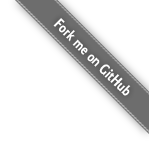Differences
This shows you the differences between two versions of the page.
| Both sides previous revision Previous revision Next revision | Previous revision | ||
|
network_backup_strategies [2011/08/04 03:34] henri [Using MacFUSE for Network Backup] |
network_backup_strategies [2012/05/16 01:45] henri [Using MacFUSE for Network Backup] |
||
|---|---|---|---|
| Line 27: | Line 27: | ||
| The risks associated with this configuration may be minimized with additional configuration on the backup server. However, such precautions complicate the backup setup. | The risks associated with this configuration may be minimized with additional configuration on the backup server. However, such precautions complicate the backup setup. | ||
| \\ \\ | \\ \\ | ||
| - | If you are determined to implement the push backup system then a combination of LBackup and [[http://connect.homeunix.com/lsync|LSync]] may be worth considering. A combination of [[http://connect.homeunix.com/lsync|LSync]] and [[http://www.lucidsystems.org/connect.homeunix.com/lbackup]] will allow you to specify a single writable directory into which the latest backup may be uploaded. Then LBackup may be used to stage the latest backup into a non-writable directory on the same system or onto a entirely different system. | + | If you are determined to implement the push backup system then a combination of LBackup and [[http://www.oriontransfer.co.nz/gems/lsync/index|LSync]] may be worth considering. A combination of [[http://www.oriontransfer.co.nz/gems/lsync/index|LSync]] and [[http://www.lbackup.org|LBackup]] will allow you to specify a single writable directory into which the latest backup may be uploaded. Then LBackup may be used to stage the latest backup into a non-writable directory on the same system or onto a entirely different system. |
| \\ \\ | \\ \\ | ||
| The advantage of these additional steps results in the backup machine not having write access to the backup directory. This means that should the machine you are backing up, be compromised your backups will still be safely isolated either in a non-writable directory on the backup server on an entirely different system. | The advantage of these additional steps results in the backup machine not having write access to the backup directory. This means that should the machine you are backing up, be compromised your backups will still be safely isolated either in a non-writable directory on the backup server on an entirely different system. | ||
| Line 37: | Line 37: | ||
| ==== Using MacFUSE for Network Backup ==== | ==== Using MacFUSE for Network Backup ==== | ||
| - | It is possible to use [[http://code.google.com/p/macfuse/|MacFUSE]] and the [[http://code.google.com/p/macfuse/wiki/MACFUSE_FS_SSHFS|SFTPFS]] system to mount a remote directory into the local file system via SFTP. Once a remote directory has been mounted it is possible to use LBackup to push files to the remote directory. However, it is recommend that you create an HFS+ disk image and then mount this when you push files. This will allow extended attributes such as resource forks to be backed up. | + | It is possible to use [[http://code.google.com/p/macfuse/|MacFUSE]] and the [[http://code.google.com/p/macfuse/wiki/MACFUSE_FS_SSHFS|SFTPFS]] system to mount a remote directory into the local file system via SFTP. Once a remote directory has been mounted it is possible to use LBackup to push files to the remote directory. However, it is recommend that you create an HFS+ disk image and then mount this when you push files. This will allow extended attributes such as resource forks to be backed up. |
| + | \\ \\ | ||
| + | An other alternative worth considering is [[http://www.lbackup.org/synchronizing_disk_images_between_machines|pushing a local sparse bundle backup disk image to a remote server]] (when the backup completes) via SSH as a post action script. | ||
| \\ \\ | \\ \\ | ||
| \\ \\ | \\ \\ | ||

